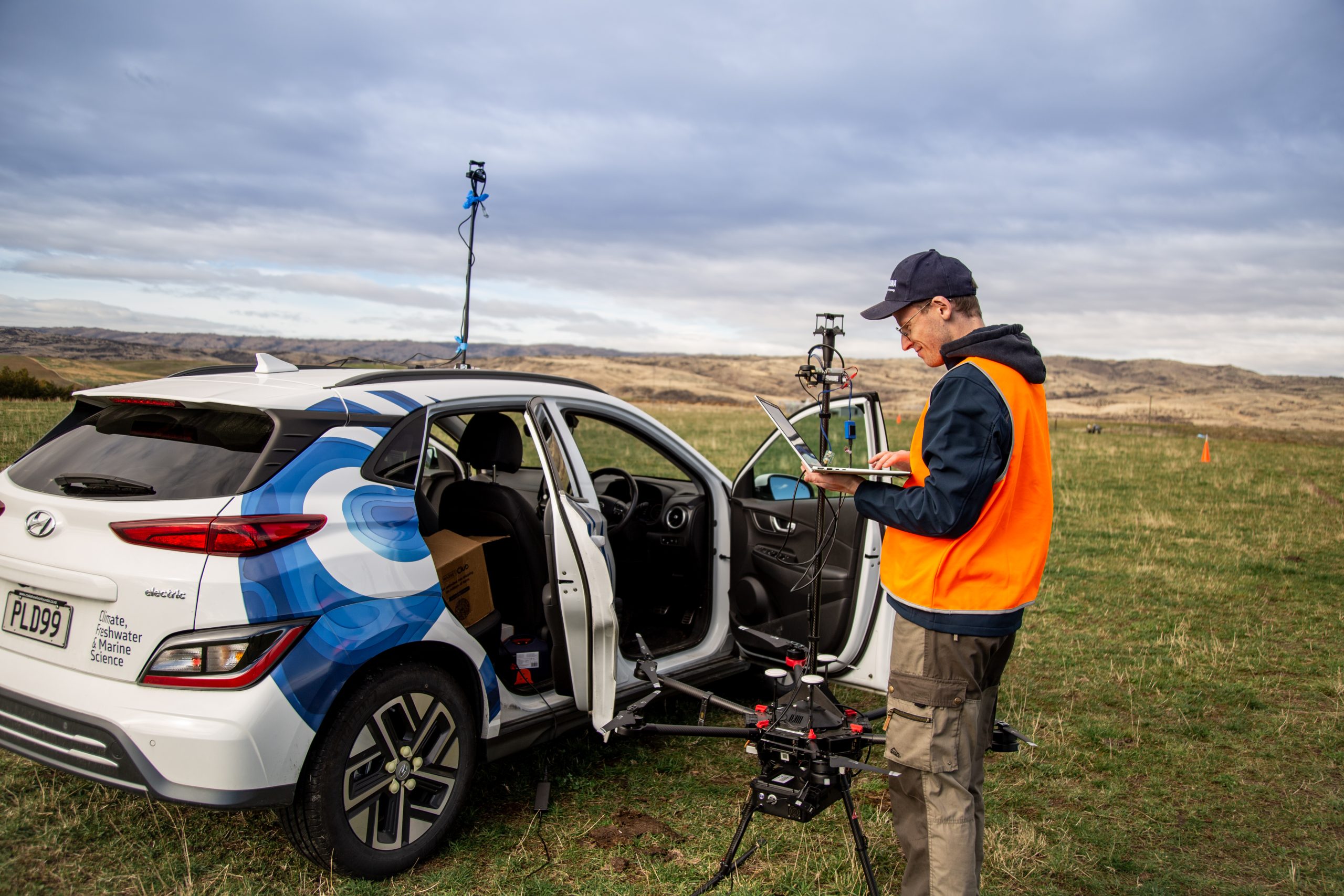Investigating regenerative agriculture in a dryland system
On-Farm Research is now two years into a project investigating Regenerative Agriculture (RA) and what role this might play in a dryland farming system. Words Paul Muir, On-Farm Research

This work was initiated in response to a call from the Ministry for Primary Industries (MPI) in late 2020 for projects that could provide a scientific evaluation of the principles of Regenerative Agriculture (RA).
As with most research these days, co-funding is needed to show community buy-in and get a project over the line. So, together with MPI, this particular project has a wide range of co-funders – Hawke’s Bay Regional Council, AGMARDT, Barenbrug Seeds, Poukawa Research Foundation, Ravensdown, Atkins Ranch and The Nature Conservancy. This makes it a true community project. Set up with a four-and-a-half year timeframe, the project is overseen by a governance group and a technical committee who monitor and advise on the various sub projects.
There are a wide number of practices and definitions of what constitutes RA but the ones we are concentrating on are the role of diverse species in a sward, the role of reducing synthetic fertilisers and the role of grazing height and grazing interval on productivity and species composition.
An early trial was established to look at the productivity of a range of diverse pasture mixtures. These ranged from conventional mixtures (ryegrass/clover), plantain/clover, a diverse mixture comprising 31 species across five different plant groups sown at various sowing rates.
This particular trial was also cut at two different mowing heights to look at the effect of ‘grazing’ residual on production and on how species mix changes over time. Whilst we often get asked about why we do not have grazing animals, the reality is that fencing up and managing a replicated 64 plot grazing trial is prohibitive. And as soon as we introduce grazing animals, their diet selection (i.e. they pick out the legumes) rapidly modifies the plots. To determine whether different mixtures contribute to productivity, we have no choice but to exclude animals. However, we do have a replicated small plot trial where we can compare the effects of grazing on two of the extreme treatments – the ryegrass/clover treatment and the 31 species diverse mix
The measurements we are undertaking in this trial are dry matter production, forage quality (Brix and ME) changes in species, soil carbon, earthworm numbers and soil microbial activity.

We also have a farmlet study that is now in its second year. There are three farmlets – a ryegrass/clover, plantain/clover and a diverse species farmlet sown with 23 species across five plant groups. Each farmlet is six hectares and all have a similar background history. The ryegrass and plantain farmlets are fertilised as per standard practice and the diverse mix is fertilised with a non-synthetic mixture.
The ryegrass farmlet is rotationally grazed with winter trade lambs to residuals of 1400 kilograms of dry matter per ha then grazed by yearling cattle. The plantain farmlet is rotationally grazed with winter trade lambs followed by ewes with twin lambs and then lambs post-weaning. The diverse farmlet is grazed by cattle on daily shifts. This is done to eliminate the diet selection that would occur with sheep, and is avoided with cattle with their larger bite size. With the very wet season experienced in Hawke’s Bay, dry matter production has been high across all three farmlets, at 15.8, 15.2 and 13.0 tonnes DM/ha for the ryegrass, plantain and diverse farmlets.
Soil carbon is also a key focus of these farmlets. At the start of the trial, twenty 60 cm soil cores were taken from each farmlet. Each core was analysed for soil C and N at different depths (0-10cm, 10-20cm, 20-30cm, 30-40cm, 40-60cm). These are our base measurements that will be repeated at the end of the experiment to see if differences in management have affected soil carbon levels. The protocol we are using also ensures that soil carbon measurements are consistent with those being made in other projects around the country.
Soil carbon was highly variable across each paddock and particularly at depths of 20-30cm, which is where our topsoil becomes subsoil. Soil carbon levels declined with depth but there was no difference in the average soil carbon levels between farmlets at the start of the trial. Approximately 81% of the carbon was found in the top 30cm.
This work highlights the difficulties in moving to a system where changes in soil carbon can be offset against emissions. The difficulty is in the high cost of accurately measuring and auditing soil carbon levels. Even with these flat paddocks, soil carbon was variable and many samples were needed to get accurate data. On hill country, with ridges and gullies and different topsoil depths, soil carbon variability is magnified many times and many more samples are needed to get meaningful answers.
As well as DM production and soil carbon, other measurements within the farmlets include animal performance, change in pasture species, soil microbial activity, earthworm number and water infiltration rate.
For more information visit: on-farmresearch.co.nz/resilient-agricultural-project




